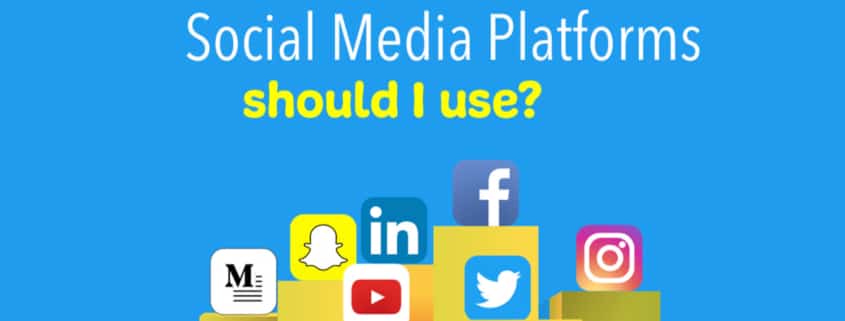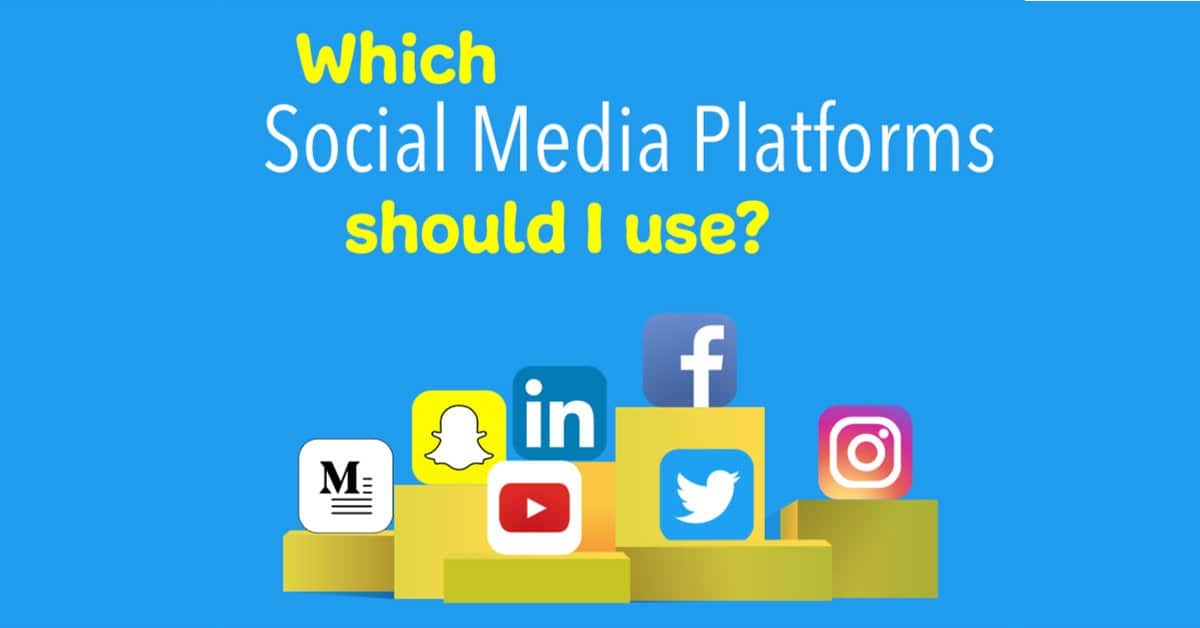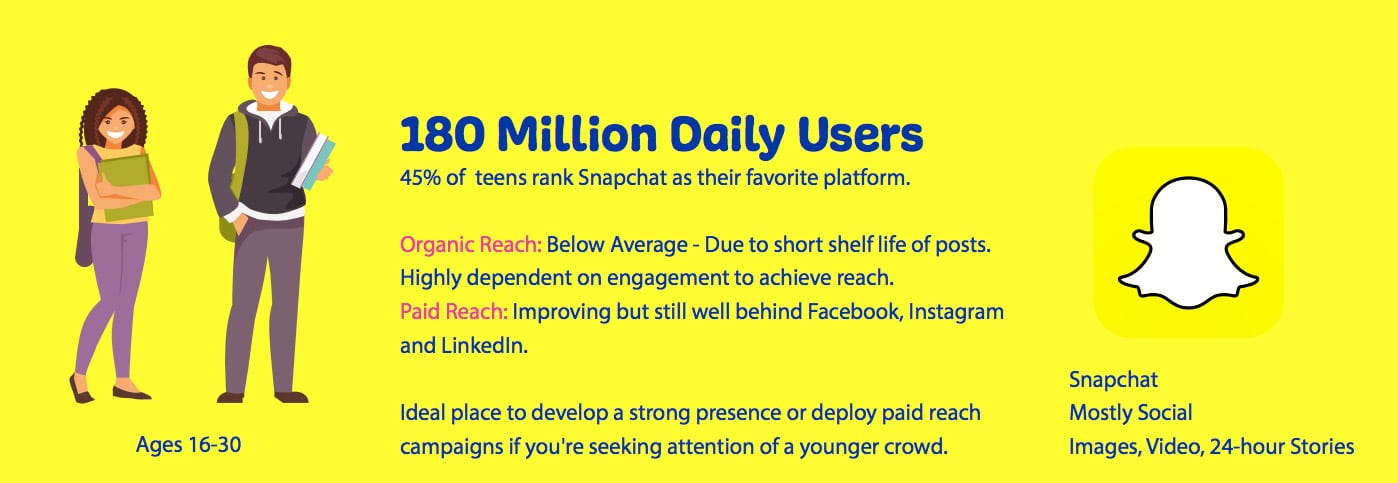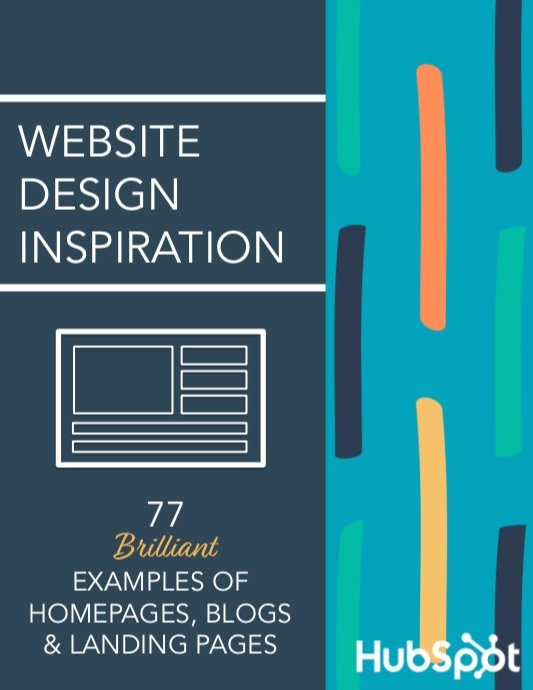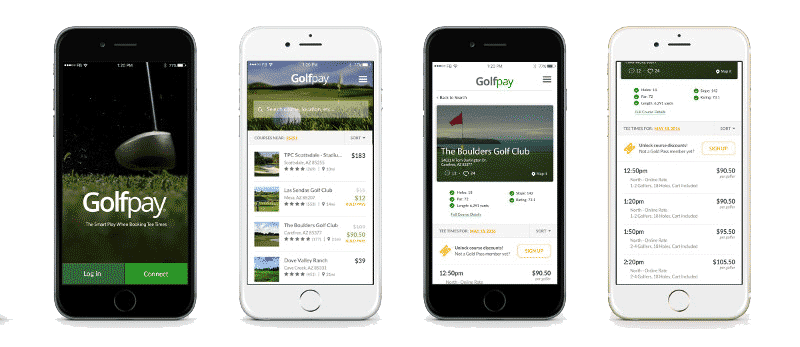Which Social Media Platforms Should I Use?
This is for those of you looking to learn which social media platforms might be right for your business.
Maybe you feel a little bit overwhelmed with all of the different social media options and ways of communicating with prospects and customers. Here’s a quick guide to choosing only the platforms that’ll bring some value toward your mission.
Fish where the fish are
This is about the places where we might want to consider having stuff.
It’s a big mistake to think that you need to have a presence on every social platform to win. That’s spreading your resources far too thin, and you won’t likely bring impact on any of the platforms.
Instead, allocate your marketing resources on social media platforms that make the most sense. This is based on the type of demographics that frequent each platform, and their “mindset” when they’re there. Once we understand these elements, we can better select the right platforms to play on, and create content that is contextual to that platform.
Facebook is Still Super Relevant
If you’re chasing audiences ages 30 to 65-year-olds or so, Facebook is excellent right now. It’s still the big player in the room in fact. I mean everybody’s on Facebook in general.
While organic reach on Facebook has diminished in recent years, paid reach is probably the absolute best in terms of underpriced attention on the web. You can get in front of highly targeted demographics based on location, interests, incomes, etc.
It’s important to know that people generally go onto Facebook for reasons that are a little bit more personal. They want to communicate with their friends, catch up on gossip, and see what their friends are doing. Develop your content with this fact in mind.
LinkedIn is for Business
Nobody goes to LinkedIn to see pictures of dogs or what their buddy ate for dinner. They go there for business connections and advice. So creating content that’s contextual for the platform is important.
The same article or a video posted on Facebook should be with a more personal, casual context, while the same content on LinkedIn should be introduced with a business spin.
Organic reach on LinkedIn is tremendous right now. Long-form written articles can help you get found more than any other platform.
Additionally, a great business strategy on LinkedIn includes your entire team. All employees following your organization on LinkedIn can serve to amplify your reach exponentially.
Instagram is Best for Visual, Native Content
Instagram is a younger demographic…perhaps ages 18 – 35. It’s important to note that most people got to Instagram for social/personal content rather than business-related stuff.
While organic reach has declined in recent years, paid reach is still super cheap.
Additionally, external links are not allowed on Instagram (except in your profile). This means that it’s not a great platform for driving traffic to your website or for creating targeted calls to action. Instagram content should “live” on the platform and be designed to be consumed directly on the platform. Great for awareness, not so ideal for “bottom of the sales funnel” activities.
Twitter has a Short Shelf Life
Twitter is a very “busy” platform. Posts flow through the feed and very quickly get covered up with new posts.
This means that you can pretty much repost stuff almost as often as you want. Posting links to the same article with slightly different contexts multiple times a day is fine. There’s very little fear of having somebody getting inundated with your stuff on Twitter because there’s so much going on.
Twitter is also the best place for listening. Subscribing to certain hashtags or following your clients, staff, competitors, industry thought leaders can give you an excellent idea of what’s happening. This also makes the platform excellent for gathering quick feedback from your audience.
Youtube is the New King of Television
If you’re doing anything video related, you have to build a presence on Youtube. It’s one of the world’s largest self-contained search engines.
Organic reach is still tremendous, but it requires some tact. Video titles, keywords, and descriptions are critical for being found. Paid pre-roll ads are incredible ways to reach target audiences through video for reasonable rates.
Snapchat is the Most Popular App for Teens
If you’re in business marketing to the younger crowd, look long and hard at Snapchat.
Medium for Long-Form, High-Quality Content
Medium is great for deeper articles covering the helpful or informative subject matter. Much of the content on Medium is gated (requires a small monthly payment from readers).
This means there are no commercials, no ads, and they are very particular about preserving a “spam free” environment. Don’t use Medium if you plan on firing out calls to action…they won’t have it. Do use medium if you write good stuff for building trust and awareness around your brand.
Other Stuff to Consider
Website: The Hub of All Your Marketing
Okay, website is obviously the focal point. We have the most control over the website we can do anything we want. We can build landing pages that are custom suited to segments of your audience and what they are interested in.
Let’s say we have an ad that talks about family golf. We don’t want to send this traffic to the website homepage.
We want this traffic to hit a customized landing page that talks about family golf, complete with pictures of families having fun and content around the benefits of bringing your kids with you to the golf course.
This provides continuity. We need to map this stuff out for each of our buyer personas at each stage of the buying process.
Nevertheless, your website is the focal point of everything to do with marketing your mission. That’s your hub. Everything stems from here.
Here’s Hubspot’s list of 27 of the Best Website Designs
Good ‘Ol Email
Email is still super relevant. People check their emails many times every day. Email also allows us to segment audiences to a granular level where necessary and set up complex automation that work for us 24-7.
Email blasts to everybody in your database universally is no longer a great idea.
When website visitors fill out forms, we can ask simple questions that give us insight as to what persona they are and what they are most interested in. This reconversion helps us segment our audience so that we can bring them more value in future nurturing campaigns.
How frequently should we be emailing?
Well, that depends on the nature of your messages. If you’re continually pitching your audience with offers and calls to action, then you probably shouldn’t email too often. You’ll trash their trust and your database will lose its value.
On the other hand, it’s a very different story if you’re attempting to deliver value to your audience. I mean if you’re trying to answer questions they have, address challenges they face, and resolve problems for them. When you’re delivering more value than you’re attempting to extract from your audience, feel free to email as often as you want.
This helps you stay top of mind, build trust, and gain authority in your community.
Text Messaging
Text messaging has great “open rates”, but is far more interruptive. It meets people wherever they are right on their mobile phones.
I feel that you need to be careful with text. It’s very easy to bombard your audience with sales pitches and have them tune you out. Try to deliver a proportionate amount of value through your texts and build confidence in your audience. They should know that you’re in it for the long haul, not just trying to pitch them on self-serving offers continuously.
That said, text messaging is very good for calls to action, tips, and short messages. It’s great for staying top of mind no matter where your audience is and what they are doing.
In the golf business, technology leader Golfpay is tackling text messaging and winning the attention of golfers in mobile environments.
In Summary | Which social media platforms to use
Fish where the fish are. Nobody’s saying you should spend your time and energy on all of them…only the ones that include your target audience, with regard to your strengths in terms of the type of content you’re producing (i.e., video, audio, text).
At the end of the day, quality content wins. Spend your energy coming up with information that your audience is going to value.
Good luck!
